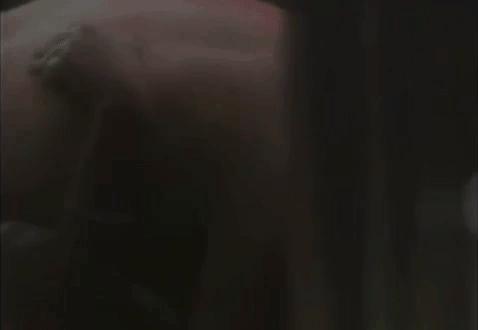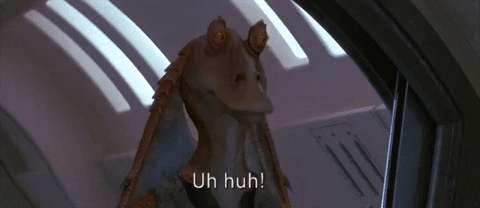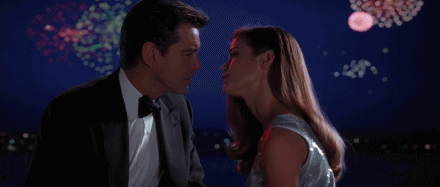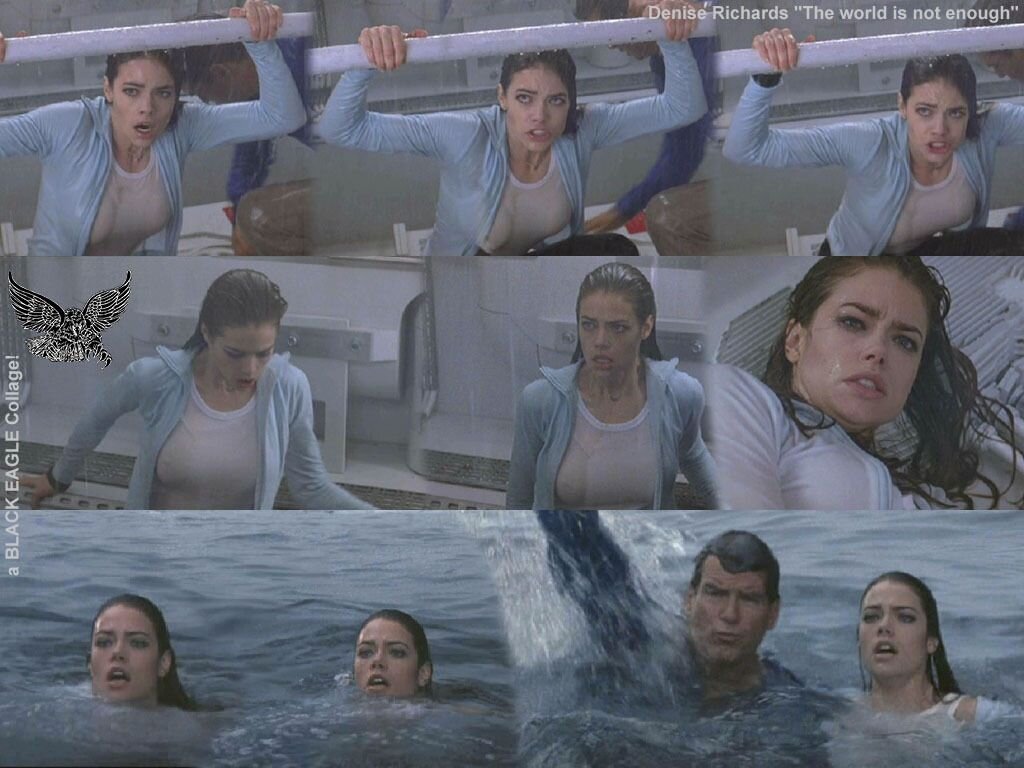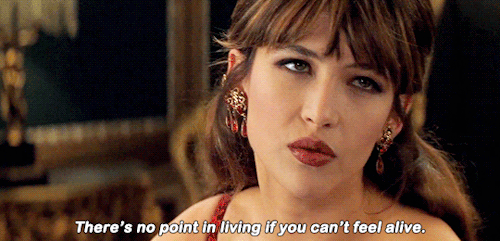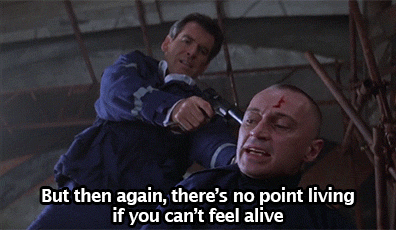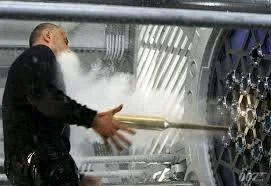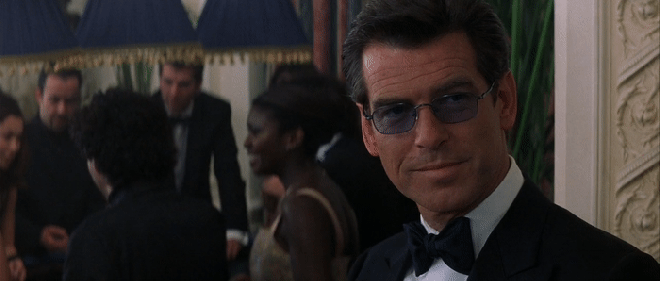Listen to the companion Raven Bond podcast here!
Released: November 1999
Producer: Michael G Wilson and Barbara Broccoli
Director: Michael Apted
Written by: Neil Purvis, Robert Wade and Bruce Fierstein
Plot:
James Bond rescues a ton of money stolen from billionaire businessman Sir Robert King; but fails to stop King being blown up by said money back at MI6 HQ in London. Bond is assigned to protect King’s daughter Elektra, who had previously been kidnapped and held for ransom by Renard, the terrorist now suspected of the assassination. Elektra is determined to finish her father’s pipeline project through the Caucacus, but when weapons-grade plutonium gets involved, things with Elektra get more... complex. Also, Denise Richards is a nuclear physicist.
Famous For:
Sophie Marceau’s impossible beauty
Renard’s brain-busting bullet
The return of Robbie Coltrane as Zukhovsky
THAT PUN
It might be the weather, it might be the time of year, it might be existential dread brought on by a pandemic and an upcoming US presidential election that could very well return to office the most insufferably awful person to ever grace this planet… but these retrospectives are taking longer to write.
I think it’s because the Brosnan-era Bond films are so firmly of my teens and early twenties, that they evoke events and incidents both glowingly rosy and awkwardly cringey.
The 1960s may well be the 1860s for all my experience of them. But the late 1990s and early 2000s was my transition from spoiled teen to spoiled young adult, and the Bond movies were markers for that. So they’ve been throwing up misty-water-coloured memories like Barbra Streisand on a roller coaster, and I have to stop the ride occasionally to hose the chunks off.
In 1999, for example, I had both a great figure AND horrendous facial acne I had to go on medication to treat. I began doing improvised comedy and plays at both university and in community theatre; I also worked part-time as a check out chick at Coles where customers’ children would often whisper loudly things like “Mummy, what’s wrong with her face?”
Of course, nothing so terrible it scarred me for life (thank you, Roaccutane), nothing so glamorous that it set me up for a life of fame and fortune. No trauma, just a timeline.
Ah well, time to put away the introspection and get on with the latest Bond retrospection.
Let’s party like it’s 1999 - regarded now as one of the greatest years in cinematic history.
The Matrix, Fight Club, American Beauty, Star Wars: The Phantom Menace - the year was full of instant classics.
I still remember seeing advertisements for The World Is Not Enough plastered across the sides of buses in the lead up to its release.
A lot of fuss had been made during promotions for the film about its boat chase down the River Thames to the Millenium Dome, which turned out to be part of the pre-credit sequence. There was also excitement about Garbage, one of the hottest bands on the planet, doing the theme song.
And I remember being thrilled by the title - a reference to the Bond family motto first noted in On Her Majesty’s Secret Service.
And yet, I never picked up on the deeper meaning of that reference, and the way in which this film pays a strange, flipped tribute to George Lazenby’s 1969 outing.
Barbara Broccoli herself had had the idea for a villainous plot centering on controlling oil pipelines in the Caspian Sea after seeing a news report about the very subject in late 1997. She and co-producer/half-brother Michael G Wilson then made a critical decision that has shaped the Bond franchise to this day - hiring screenwriters Neal Purvis and Robert Wade.
The pair suggested a female villain, which Broccoli loved, saying “With Elektra, Bond thinks he has found Tracy, but he's really found Blofeld.”
Tracy, of course, is Tracy Di Vicenzo, played by the recently-departed Dame Diana Rigg, bless her ass-kicking, chain-smoking soul.
Here, Bond is outfoxed not by a criminal mastermind with a pussy, but…
...er…
...well, look, it’s Sophie Marceau, that’s the main thing.
There’s certainly nods to both Tracy and Telly Savalas’ Blofeld in Elektra King.
Both Tracy and Elektra are motherless, with complicated relationships with their powerful businessmen fathers.
There’s certainly some costume inspiration from Tracy in Elektra, with glamorous elements of loose and lace fabrics; plus a sleek ski suit.
And when Elektra’s heel turn is revealed, she shows Bond a self-inflicted disfigurement. Just like Blofeld in OHMSS, she cut off her own earlobe to prove she was something she was not.
Dr Christmas Jones, meanwhile, appears to have only had one costume inspiration:
Poor Denise Richards. She’s gone down as one of the worst Bond girls in the franchise, and I don’t think it’s entirely fair. I’d like to restore a bit of sheen to Denise, and NOT the Charlie kind.
A lot of the criticism was aimed at Richards being cast as a nuclear physicist, and there’s definitely a thick vein of sexism running under the convention that young and attractive women don’t make convincing scientists.
Whereas I call this picture “The Solvay 10s”. Or the “Wet-Ass Physicists”. Oh wait! “The Planck Bank”. Hang on, “Heisenberg’s Dead Certainty Principle”. What about “Marie’s Curie-osities”? “Born-Again Babes”? “Schrödinger’s Splat”? “E = ME SO HORNY”? Too far? OK.
Even I joke about Nicole Kidman, then 22, playing a sexy brain surgeon in 1990’s Days of Thunder, and I really shouldn’t because: Feminism.
Discussing Richards’ casting with a friend recently, she shook her head and said “She’s like the Baywatch of scientists”, which made me cackle unnecessarily loudly.
But frankly, it’s entirely possible Denise Richards’ own screen persona at the time ultimately worked against her.
Although 28 when The World Is Not Enough was released, Richards’ best known roles had seen her play characters much younger. She was a recent high school graduate turned soldier in the sci-fi war film Starship Troopers, and she played actual high school students in both Wild Things (famously having a threesome with Neve Campbell and Matt Dillon) and Drop Dead Gorgeous (fighting Kirsten Dunst for a beauty pageant crown).
While all three films had elements of dark satire to them, a superficial reading could see you lump Denise Richards into a ready-made bubbling bimbo hot pot.
A spot of rational thinking allows you to see how Eon Productions could have thought Richards’ skill at playing these characters - edgy ingenues - would translate well to Dr Christmas Jones. Sophie Marceau’s Elektra was mysterious, unknowable, capable of playing a convincing victim while in reality leading the plot against her father, MI6, and ultimately the world.
A brash, straight-talking American would be a good counter to Elektra’s moody “foreignness” - and appeal to the franchise’s big fan base of... well, brash, straight-talking Americans.
The trouble was Richards didn’t have anywhere near the chemistry with Pierce Brosnan as Marceau did.
THEY LITERALLY PUT FIREWORKS BEHIND THEM TO CONVEY CHEMISTRY
This is not necessarily all her fault. The role is underwritten, with the only backstory for Jones’ character being that she’s heard all the jokes about her unusual first name.
The film also has Bond fall in love - or at least potentially seeing a future - with Elektra. “This is a game I can’t afford to play,” he tells her at Zukhovsky’s Baku casino. “I know,” she replies, before they go home and fall into bed.
Their lovemaking (ewww, “lovemaking”, why did I use that word, it’s almost as bad as “moist”) is very sensual, all interlocking arms and ice cube tonsil hockey. Talk about moist (ewwwww!).
Despite leading Bond on through all of this, his passion and feeling - in stark contrast to Renard’s wet fish touch - nevertheless stirs something in Elektra that feeds the desire she has for intimacy, that deep triusm that for her pleasure and pain are just opposite sides of a coin flip. Given Bond struggles with a wounded shoulder through much of the film, there’s pleasure and pain at the ready.
This is a woman who seduced the world’s most fearsome terrorist to be her sacrificial lump monkey; having failed to turn Bond into the same, she’ll go back to Plan A: Kill Him With Sexfulness.
So the scene where she tortures him in a Ye Olde-Fashioned Garrotte Chair is full of erotic intimacy, with Elektra straddling Bond as she turns the collar binding his neck tighter and tighter. Brosnan, always a dab hand at “I’m in a crucible of pain!” acting, does a stellar job, even with the “One last screw” pun.
Bond ultimately shoots Elektra at point blank range to stop her, but then spends precious moments paying a sort-of physical tribute to her - leaning over her body in a lover-like fashion, sweeping her hair off her face, tilting his head down in sorrow.
He can’t help it, man, he DIGS a psycho. In the words of our Queen, Ms Taylor Swift:
So while Bond saves Dr Jones - admittedly with a fair amount of help from her re: the nuclear physics - a romance with her at the end seems a bit empty after the emotional and physical wringer he went through with King.
Their most fun scene together is in the King pipeline, as they chase down a bomb Renard’s planted in it (as part of Elektra’s plan to make herself look innocent, of course), and get very up close with each other as Dr Jones works to disarm it.
It’s certainly got chemistry, even if it’s just the plutonium.
And it ends with the actual best bit of banter between them, about the missing part of the plutonium bomb:
Dr Jones: I’ve got to get it back, or somebody’s gonna have my ass.
Bond: First things first.
The film does rely on her, ahem, natural assets, setting her up as sexy bait for Zukhovsky, and very much enjoying completely soaking her through in the final submarine scene:
So yes. Denise Richards - not the greatest Bond girl. But perhaps, in some ways, unfairly maligned.
I admire The World Is Not Enough because it tries things: a female villain; Elektra/Renard bait-and-switch; the increased use of M as a personal target of Elektra’s fury.
However, there’s no doubt the central story is woven with some flimsy threads that start to pill once you apply even a lazy bit of scrutiny.
To make the Elektra-is-the-baddie reveal work, she and Bond have to come under fire from machine-gun capable paragliders, while touring the survey lines for the next stretch of her oil pipeline - which for some reason can’t be done by grunt workers.
“I’m what you’d call a micro-manager.”
The attack has to be convincing but done in such a way that would still allow at least Elektra to live. They’re skiing very close together, surely even the sharpest shooter aiming at fast-moving downhill skiers could hit the wrong target?
Then the commotion causes an avalanche (again a nod to On Her Majesty’s Secret Service), but Bond is able to save them both in his fancy tricked-out inflatable jacket. Elektra then has a claustrophobic panic attack, ostensibly a PTSD-flashback to her kidnapping. Is it real? Fake? Part of the whole plan? It’s a very complicated plan, and yet responds very well to an avalanche that could conceivably kill the head of the whole operation.
We subsequently see Renard kill a Russian nuclear scientist who had provided them the parahawks, and instruct Elektra’s head of security Davidov to take his place in the next part of the plan.
Bond then sneaks out of bed with Elektra to follow Davidov, kills him, and takes his place at the meeting point, pretending to be the murdered nuclear scientist.
Only when he’s on the chopper to Kazakhstan where does he start actually using a fake Russian accent; but that’s enough time to get it down pat to convince the boss onsite, American nuclear physicist Dr Christmas Jones, who’s helping a team neutralise inter-continental ballistic missiles on an old Russian base.
Let’s not even begin on why we never hear Bond speak to Zukovsky in Russian? Let’s assume Bond learned that one phrase and bugged out of русский 101.
Renard and his men then turn the tables on the operation, stealing an ICBM and removing its GPS locator card - with Renard then trapping Bond and Jones inside the bomb bunker and making a getaway.
By the time Bond and Dr Jones return to Azerbaijan, Elektra has convinced M to come to her aid, saying that she fears for her life. While Bond and Dr Jones are chasing that bomb in the pipeline, Elektra does her Scooby Doo reveal, has her bodyguard kill everybody present and kidnaps M.
So Renard and Elektra really had to anticipate Bond’s every move to ensure he ended up in Azerbaijan to be in a pipeline where they could kill him, after they’d managed to get him to Kazakhstan to try to kill him, because they hadn’t killed him on the ski slopes of Azerbaijan.
I think?
It’s either a very methodical plan or they are very, very quick with improvising new ones.
This is nit-picky of me, but it’s an indication of the twists this movie gets itself into by possibly trying to be too clever and plotty.
One of the great action scenes in the film is the sawing helicopter chase at Zukovsky's caviar processing plant. Zukovsky had won $1 million from Elektra in a one-off game of high card draw - the moment where she uttered the catchphrase Bond would later hear Renard utter.
Bond - who is somehow driving his new Aston Martin even though he ostensibly flew to the Caucuses and I guess maybe they flew his car with him but why, dear lord, it makes no sense - starts to interrogate Zukovsky but is interrupted by the helicopters wielding giant tree-lopping saws tearing into the dodgy factory.
The Aston Martin is of course sacrificed to a sawing chopper - or should that be a chopping saw? - with Bond offering a jaunty “Q’s not going to like this!” to nobody in particular.
But Bond is able to blow the helicopters up, and get back to interrogating Zukovsky in a vat of his own caviar. It turns out the $1 million was to allow Elektra the use of a submarine in the control of his navy captain nephew Nicolai - but Zukovsky hadn’t realised Elektra and Renard were working together, and oh crap, his nephew is probably in danger.
They all head to Istanbul where Nicolai was due to take the submarine, and work out that if Renard puts the remaining plutonium into the sub’s nuclear reactor, it would create a catastrophic meltdown that would destroy Istanbul, poison the Bosphorus and leave Elektra’s pipeline as the only remaining usable option.
Elektra and Renard had been tipped off to Bond and Jones still being alive by Zukovsky’s double-agent, gold-toothed henchman, whose character is named “Bullion” and is played by the rapper Goldie. Cute.
Here in Istanbul he pulls his big move - setting off a bomb inside the comms room, then taking Bond and Jones into custody when they survive. Having just determined that M is at the Maiden’s Tower, a building on a small islet off the coast (because the resourceful boss used batteries from an alarm clock to activate the GPS locator card Bond had taken when Renard stole the bomb in Kazakhstan), they now are very conveniently taken straight there by Bull and his goons.
This is where the torture happens; this is where Zukovsky shows up with his crew to kill the traitor Bull and is shot by Elektra for his trouble. With his dying breath, he uses his cane gun to shoot a cuff from Bond’s hand, allowing him to break free. And this is where Bond kills Elektra. Her death stops the tantalising dance she had done with Bond since the beginning; everything after is perfectly serviceable, but a much more standard “kill the bad guy” climax.
Bond swan dives off the Maiden’s Tower and manages to get inside the descending sub. Having killed Nicolai and his crew with poisoned brandy, Renard and his death cult followers plan to die with the bomb. But Bond sends the sub crashing to the sea floor, forcing Renard to speed up the detonation.
He and Bond have a massive brawl right near the reactor, which eventually leads to Renard being stuck through the heart with the plutonium rod.
“There’s no point in living if you can’t feel a steel rod through your sternum.”
Bond and Dr Jones shoot themselves back to the surface via the torpedo launcher, only to be overlooked for rescue by a pleasure cruise.
The film’s conclusion is pretty straightforward - searching for 007 using heat-seeking technology, they work out that - GASP! - the body signature is actually TWO body signatures on top of one another. Cut to the Christmas pun, and bang, it’s all over.
It’s a very sudden end to a film that began with the longest pre-credit sequence of the franchise to date: a stunning 14 minutes. The titles were supposed to kick in after Bond repels out of the gangster’s window in Bilbao, but test audiences apparently found that a little anti-climactic.
And so we get Bond’s rendezvous with M and Sir Robert King back in London, and the latter’s death-by-explosion-inducing-brooch as he personally stacks his cash into a suitcase. You’d think maybe they’d bank that and just send him a transfer, but again, that wouldn’t work for the plot.
King’s money blows up, blowing King and a large chunk of MI6 up, and Bond uses a jet boat to chase the female assassin down the Thames to the incredibly-timely-in-1999 Millenium Dome. She blows herself up in a hot air balloon over the dome, letting Bond fall and injure his shoulder.
The title song by Garbage, featuring the yearning pop tones of Shirley Manson, is a belter, but what I’d like to finish with is the final appearance of one of the most beloved characters in the entire franchise: Desmond Llewellyn’s Q.
An absolute institution since his introduction in From Russia With Love, Llewellyn appeared in every Bond film except Live and Let Die. It was an unparalleled achievement, working alongside Connery, Lazenby, Moore, Dalton and Brosnan.
Despite his fame in the role, it never made him rich; he was only ever paid for his few days’ filming each time, and never shared in those big box office numbers. Still, he was happy continuing in the role “as long as the producers want me and the Almighty doesn’t.”
Lllewellyn was 85 when he filmed his appearance in The World is Not Enough, but it wasn’t his age that saw the Almighty come for him, just three weeks after The World Is Not Enough opened. He was driving his Renault home from a book signing when it collided with a Fiat. Llewellyn died later in hospital, and it was ruled an accidental death.
In light of that, it’s rather astonishing that his final appearance in The World Is Not Enough is so pitch perfect, given nobody knew it would be his last.
The franchise always loved having a Q-lab in an exotic location - hidden inside a pyramid, or an Indian marketplace, or a half-sunk ship.Here, he’s up in Scotland at MI6’s highland retreat, where kilted soldiers can kill you with their bagpipes in a non-musical way. He even has an heir apparent, R, played by John Cleese as a bumbling “junior” who brings back the old contempt of Bond’s carelessness with gadgets.
There’s a few references to Q retiring, to the point where Bond even says pointedly “You’re not going anytime soon, are you?”
Q’s final exit - lowering himself through the lab floor after the retort “Always have an escape plan” - is simply genius. It’s the most bittersweet farewell, made more so by the fact that Llewellyn would have gone on playing Q, reading the difficult tech lines off cue cards, in Die Another Day, had fate not intervened.
Or maybe, just maybe, fate did intervene?
Because as we will see next week, it could be considered a good thing that Q escaped before Brosnan’s final, and worst regarded, Bond outing.
It may have its detractors, and have legitimate problems with its story structure, but The World Is Not Enough still had Desmond Llewellyn.
His passing joined that of the century itself. The next Bond film would ring in a new Millenium. Would Pierce Brosnan survive the transition?
Thank you for reading this instalment of the James Bond Retrospective! If you enjoyed it, you can sign up to support the series and my other writing/podcasting efforts via my Patreon page. Thanks to all of you who are already members; your support is truly invaluable. You can listen to the companion Raven Bond The World Is Not Enough podcast here:
Stu and I are also ranking the Bond films as we watch and podcast about them. Here’s how we stand:
See you next time as the Pierce Brosnan era ends with Die Another Day!

